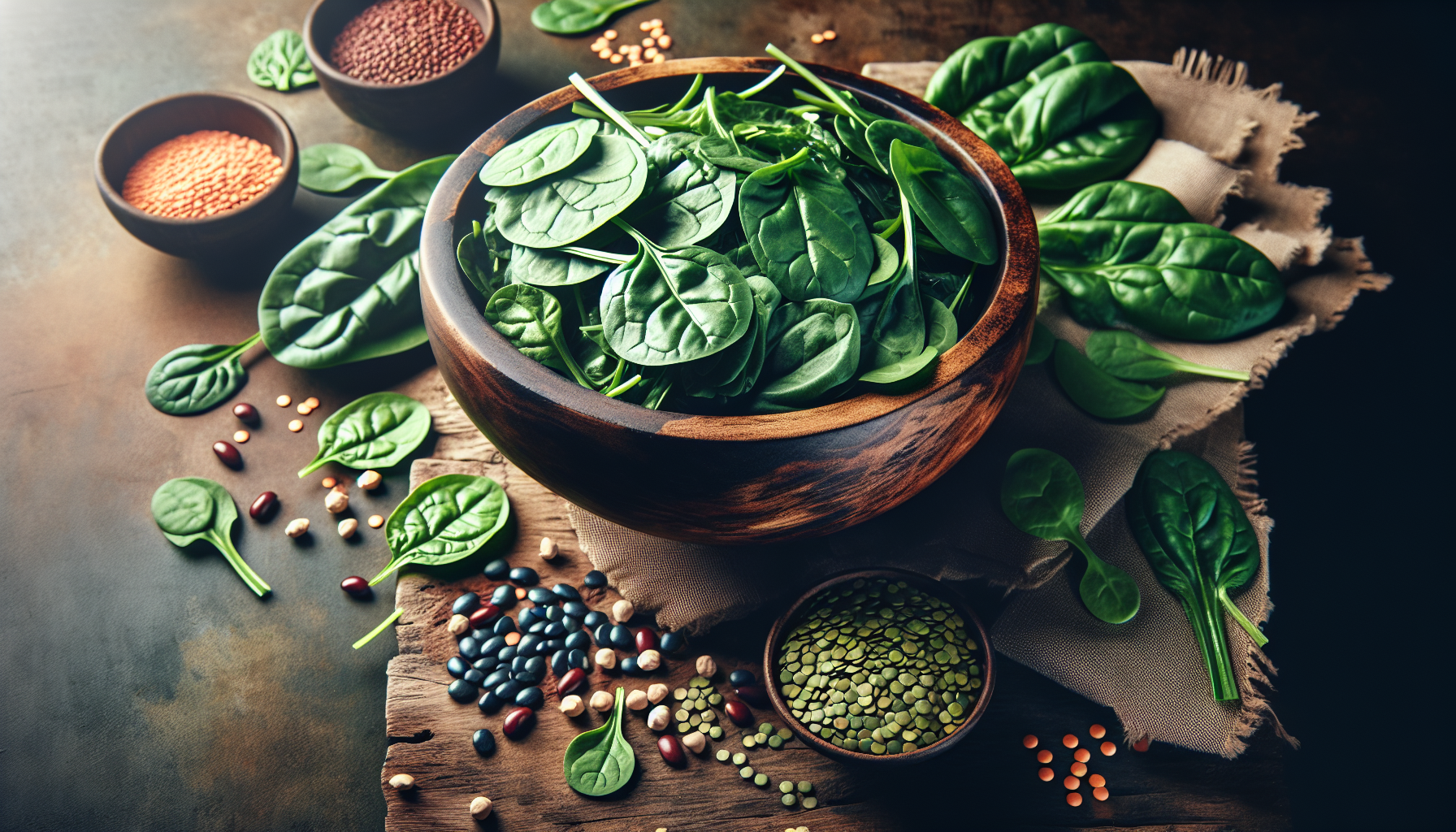Have you ever thought about the impact of certain foods on your health? It’s fascinating how what you eat can influence everything from your energy levels to your nutrient absorption. One area worth considering is the connection between oxalates and iron deficiency. Understanding this relationship can make a significant difference in your dietary choices and overall well-being.
What Are Oxalates?
Before delving into their effects on iron deficiency, let’s clarify what oxalates are. Oxalates, or oxalic acid, are naturally occurring compounds found in various plants. They are particularly abundant in leafy greens, nuts, seeds, and certain fruits and vegetables. While your body can manage some oxalates, consuming them in excess may lead to health issues.
Sources of Oxalates
You might not realize it, but your favorite foods could be high in oxalates. Some common sources include:
- Leafy Greens: Spinach, Swiss chard, and beet greens are particularly high in oxalates.
- Nuts and Seeds: Almonds and cashews, along with sesame seeds, can contribute to your oxalate intake.
- Fruits: Rhubarb, blackberries, and grapes all contain notable levels of oxalates.
- Vegetables: Potatoes and okra are also on the list, though they might not be top choices in your diet.
It’s essential to recognize these foods, especially if you’re trying to manage oxalate consumption. While they provide many nutrients, moderation is key.
How Oxalates Affect Mineral Absorption
Oxalates can interfere with the absorption of certain minerals, particularly calcium and iron. When oxalates bind to calcium in your gut, they form insoluble salts, making it difficult for your body to absorb this vital mineral.
The Link Between Oxalates and Iron Absorption
The interference doesn’t stop with calcium. When you consume iron alongside high-oxalate foods, oxalates can reduce the amount of iron your body can absorb. This can be particularly concerning if you are relying on plant-based sources of iron, which are already less bioavailable compared to animal sources.
Understanding Iron Deficiency
Iron deficiency occurs when your body doesn’t have enough iron to produce hemoglobin, the protein in red blood cells that carries oxygen. This can lead to anemia, causing fatigue, weakness, and a variety of other symptoms that can affect your daily life.
Symptoms of Iron Deficiency
Being aware of iron deficiency symptoms can help you address any potential issues early on. Common signs include:
- Fatigue: Feeling unusually tired or lacking energy?
- Pale Skin: If your skin is paler than normal.
- Shortness of Breath: Experiencing difficulty catching your breath during normal activities.
- Heart Palpitations: Noticing irregular heartbeats can be a sign.
If you recognize these symptoms in yourself, it might be time to evaluate your diet and consider consulting a healthcare professional.
Who Is at Risk for Iron Deficiency?
Certain demographics are more susceptible to iron deficiency than others. Understanding if you fall into one of these categories is vital:
- Vegetarians and Vegans: Plant-based diets may lack sufficient iron, especially if you consume high-oxalate foods.
- Women of Childbearing Age: Menstruation increases iron needs; thus, women are more likely to experience a deficiency.
- Pregnant Women: Increased blood volume and fetal needs amplify iron requirements.
- Individuals with Certain Health Conditions: Conditions like celiac disease, ulcerative colitis, or gastric bypass surgery can impact nutrient absorption.
If you identify with any of these risk factors, consider evaluating your iron intake alongside your oxalate consumption to maintain optimal health.
How to Reduce Oxalate Intake
If you’re concerned about the effects of oxalates on your health, you may want to lower your intake. Here are some strategies to consider:
Cooking Techniques
Cooking methods can significantly influence oxalate levels in food. Here are a few tips:
- Boiling: Boiling can reduce oxalate content. Ensure you discard the cooking water to prevent reabsorption.
- Steaming: This method may retain nutrients better than boiling but still reduces oxalates.
- Soaking: Soaking nuts and legumes can help decrease oxalate concentrations.
Implementing these cooking techniques into your routine can help you enjoy your favorite high-oxalate foods with less concern.
Dietary Substitutions
If you want to cut back on oxalates, consider alternatives to high-oxalate foods. For instance:
- Replace spinach with kale or collard greens—both are nutritious and have lower oxalate levels.
- Opt for white rice instead of brown rice if you’re a rice lover, as it contains less oxalate.
- Snack on sunflower seeds instead of almonds or cashews.
These simple changes can help maintain a balanced diet without overly restricting your food choices.
Maximizing Iron Absorption
While reducing oxalate intake is beneficial, you should also focus on enhancing iron absorption from the foods you consume. Here are some effective methods:
Pairing Nutrients
Pairing iron-rich foods with those containing vitamin C can significantly enhance absorption. For example, if you enjoy a spinach salad, add some chopped bell peppers or a slice of lemon to boost absorption.
Include Heme Iron Sources
Heme iron, found in animal products, is more readily absorbed than non-heme iron from plant sources. If you incorporate lean meats, poultry, or fish into your diet, it can help increase your overall iron levels.
Monitor Your Intake
If you suspect iron deficiency, keep track of your food intake. Measure your oxalate and iron consumption to see how they impact each other. You might even find that certain combinations of foods yield better results.
Supplements and Diet
Should you consider supplements? It’s essential to analyze your unique situation. If diet adjustments aren’t enough, iron supplements can provide a solution. However, it’s crucial to consult a healthcare professional before starting any supplementation, as too much iron can cause adverse effects.
Types of Iron Supplements
There are various forms of iron supplements, including:
- Ferrous sulfate: Commonly recommended for iron deficiency.
- Ferrous gluconate: Milder on the stomach for those sensitive to iron.
- Heme iron polypeptide: Derived from animal sources for better absorption.
Timing and Consumption
Knowing how and when to take them also matters. Consume iron supplements on an empty stomach, ideally paired with vitamin C. Avoid taking them with calcium-rich foods or high-oxalate items, as these can hinder absorption.
Conclusion
Understanding the relationship between oxalates and iron deficiency can empower you to make informed dietary decisions. By recognizing oxalate sources, being aware of iron deficiency symptoms, and adjusting your cooking and eating habits, you can better manage your health.
Remember, every person’s dietary needs are unique, and what works for one might not work for another. Pay attention to how your body feels and what it needs. If you suspect you might be dealing with iron deficiency, don’t hesitate to reach out to a healthcare provider. Together, you can create a plan to ensure that you maintain not just your iron levels but your overall health and wellness.
Being proactive about your diet can lead you to a path of enhanced well-being. So, what will you choose to put on your plate today?





